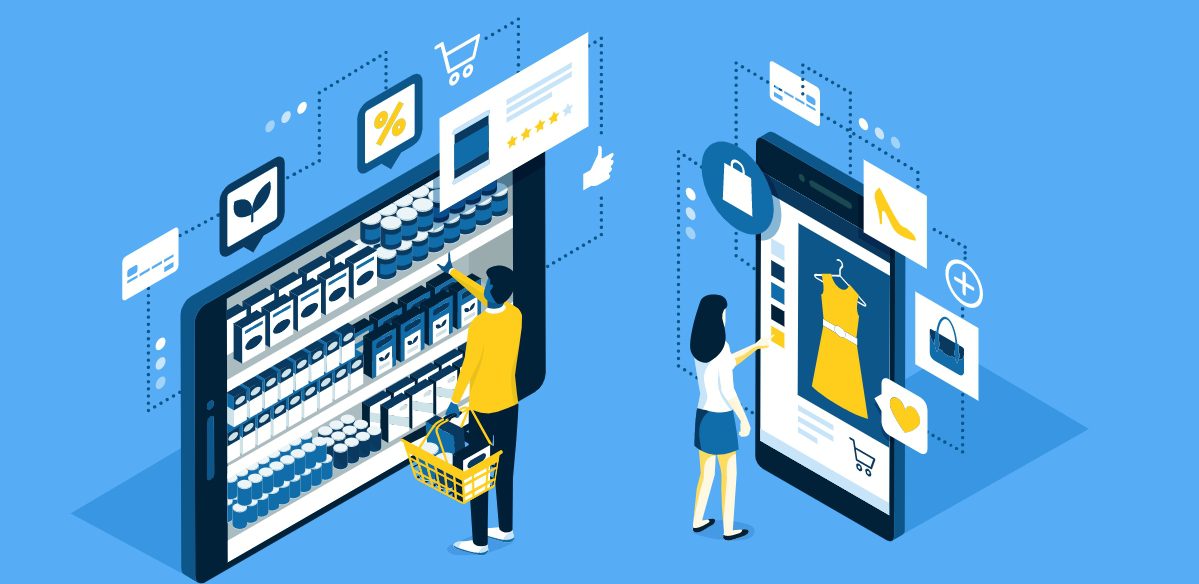 Shopify has been one of the biggest growth stories within e-Commerce in recent years, with the company’s stock skyrocketing 130% year-to-date and a reported 48% revenue surge of $362 million in Q2. While the company is known primarily for helping small businesses set up online stores and sell products directly to consumers, Shopify recently introduced its own fulfillment network. The company also extends its services beyond SMB clients — Shopify Plus has 5,300+ enterprise-level merchant customers (defined as driving $1 million to $500 million and above in revenue per year).
Shopify has been one of the biggest growth stories within e-Commerce in recent years, with the company’s stock skyrocketing 130% year-to-date and a reported 48% revenue surge of $362 million in Q2. While the company is known primarily for helping small businesses set up online stores and sell products directly to consumers, Shopify recently introduced its own fulfillment network. The company also extends its services beyond SMB clients — Shopify Plus has 5,300+ enterprise-level merchant customers (defined as driving $1 million to $500 million and above in revenue per year).
In an exclusive Q&A, Shopify Plus VP and General Manager Loren Padelford shared his thoughts on:
- The continued growth of brands going direct-to-consumer (DTC) and Shopify’s role in facilitating that growth;
- How brands such as Fashion Nova, Staples Canada and Gymshark have thrived through their own DTC strategies; and
- Best practices for retailers seeking to expand into new markets.
Retail TouchPoints (RTP): There’s been a lot of talk about the growing DTC channel as more consumer goods companies bypass retail. How has Shopify helped facilitate this growth, and what do you expect the DTC landscape to look like a few years down the line?
Advertisement
Loren Padelford: DTC is a huge move, although it’s not necessarily new. We’ve been helping DTC brands build since Day 1 at Shopify. DTC is accelerating because shoppers want experiences, they want to know the brand, they want to know who they’re buying things from, and they want to have that one-to-one relationship with the producers of the products and get involved in that story.
We feel like we’re the facilitator of that. Whether it’s a startup brand or a Fortune 500 brand, the opportunity to create DTC experiences in a scalable, extensible way allows them to continue to innovate and create their own brand stories. Most people don’t know Shopify, they just know the stores who run on us.
We see this accelerating through new types of DTCs like subscriptions becoming huge. You also see the massive CPGs that have been so beholden to the retailers for decades, because they were reliant on the retailers to sell for them. The problem is those same big-box retailers have become their biggest competitors. They’re spawning their own DTC brands that compete directly with them, so your biggest channel is now your biggest risk.
We saw this with the Toys ‘R’ Us demise, it just left all these brands out in the wind that didn’t have a DTC strategy, so now we see this rapid move to DTC to create that one-to-one relationship with your customers over time.
This isn’t going to slow down; it’s going to accelerate. We feel like we’re best positioned for this because that’s what we grew up doing — taking DTC brands to market and giving them the tools that allow them to compete with those marketplaces and ultimately create more choices for consumers. It’s better for everyone that there are more brands in the world, not less.
RTP: What DTC brand growth stories have stood out to you?
Padelford: There are two examples that I find fascinating, and they are two ends of the spectrum. You’d think something like fashion, especially fast fashion, would be somewhat commoditized, especially as Amazon Fashion takes off. But then you have a company like Fashion Nova, which is monstrously scaled. Many people don’t even know what Fashion Nova is, yet they have more Instagram followers than any other fashion brand in the world.
How? It’s because they do it in a totally different way. They’ve learned that their consumers want to interact with them in a much more direct and personalized way, so they don’t follow the traditional rules of how you build a fashion company, and they have basically done this in quiet and secret. That’s the DTC brand of the future. The new Fortune 500 looks like Fashion Nova. People just aren’t aware of that because they’re not in stores in every mall and they’re not trying to take out ads on billboards, because they don’t have to.
On the other end, you have something like Staples — Staples Canada launched on Shopify Plus in July — so now you have what some would argue is the most commoditized product: office supplies. Again, how is it possible that office supply stores still exist when you have marketplaces selling these products at a loss? The answer is: humans still want to interact, and they still want to create these direct relationships, even with office products sellers. Staples is doubling down on this DTC model where the experience matters and they’re transforming their physical and online stores, and their mobile experiences, to be supportive instead of just price competitions.
In both cases, Fashion Nova and Staples Canada take different approaches to the same problem, which is how do you go directly to the consumers to get them to interact with you?
RTP: Are there any recommendations or best practices you have for retailers looking to expand into new markets?
Padelford: We’ve been very lucky. Our largest customers do more than $1 billion per year in online sales, so these are huge multinational brands, and there’s a lot of companies behind them trying to do the same thing. We try to recommend that retail is experimentation at this point.
Experience matters a lot, and it’s probably the dominant factor that matters now. Do you tell your story well? Do you understand the nuances of the markets that you’re going into, and your product mix?
If you’re a retailer of any size, whether you’re growing, changing, adapting, try a lot of stuff. Don’t get tied to a single channel. Maybe those customers in one country buy in the online store, and then in the next country they largely buy in mobile. You have to figure out the channel mixes.
We’re big believers in recruiting folks from the home country who know those regions really well that can help you adapt the brand, because what might work in one region may not work in another. One of our customers, Gymshark, is based in the UK and is all over the world, and it has different nuances and slight variations of their stores in different countries in terms of colors and product mixes, such as what’s available in one season versus another. It’s just learning and taking feedback and engaging in that research and data analysis to tweak the experiences of the stores.
RTP: Since you work with so many enterprise brands at Shopify Plus, what are some lessons you’ve learned about the way these larger size companies operate? Have they helped you understand how to work with them better?
Padelford: We almost have the same value set as our customers, which I think is unique. We grew up at the same time as the new enterprise did. This new enterprise is brand-focused, is customer-focused and is experience-focused; it’s not IT-focused. They grew up with Uber and Airbnb, they rent things, they don’t own them. They value experimentation and innovation, and so do we. I think we’re aligned in a lot of ways, and that allows us to grow up together and share best practices.
They also have no concept of the rules of retail. They are just rewriting all of the standards of how things get done, and that is massively informative for us, because we watch them do things that no one’s ever tried to do. Take flash sellers — the Kanyes and Morphe brushes, Gymsharks and Kylie Cosmetics of the world — who are dropping these gargantuan flash sales into the world. No physical retailer has ever had the volume to try and go through a checkout like they had. We have gotten so much stronger as a platform, by having to meet these customers’ desire to “break the Internet” and do events and pop-ups in a different way. We adapted our own platform based on the desires and innovation of our retailers.
RTP: How will retailers — and by proxy, Shopify — continue to adapt to consumer shopping habits, and how will this play out over the next few years?
Padelford: There’s obviously a big fundamental shift happening, especially with large merchants, in that the consumers have no tolerance anymore. Their expectations are just through the roof on experience, fee, effectiveness, product mix, and if you’re a large traditional retailer, this is a hard move. You’ve spent a lot of your time building up huge organizations that are slow-moving, because that’s how it’s worked for decades.
There are two types of the old enterprise that exist now: the ones that realize they have to change it all and are in rapid reinvention mode, and the ones that don’t. I feel like this narrative’s going to play out in spectacular fashion over the next five years. Customers cannot tolerate bad experiences anymore. It’s such a fascinating thing to watch. As a shopper and a consumer, walk around the malls now and you can almost feel the stores that have realized “something’s got to change” versus the ones who seem to be holding onto this past impression of the world.
We’re focused on trying to solve a lot of those challenges for them and help them transform, but I think the shakeout is coming and it’s coming hard. It will be interesting to watch.









